Exploring Salzburg: The City of Music and More
Whether you’re a fan of 'The Sound of Music', Mozart, history, or fabulous food, you’re in for a treat in Austria’s multifaceted city
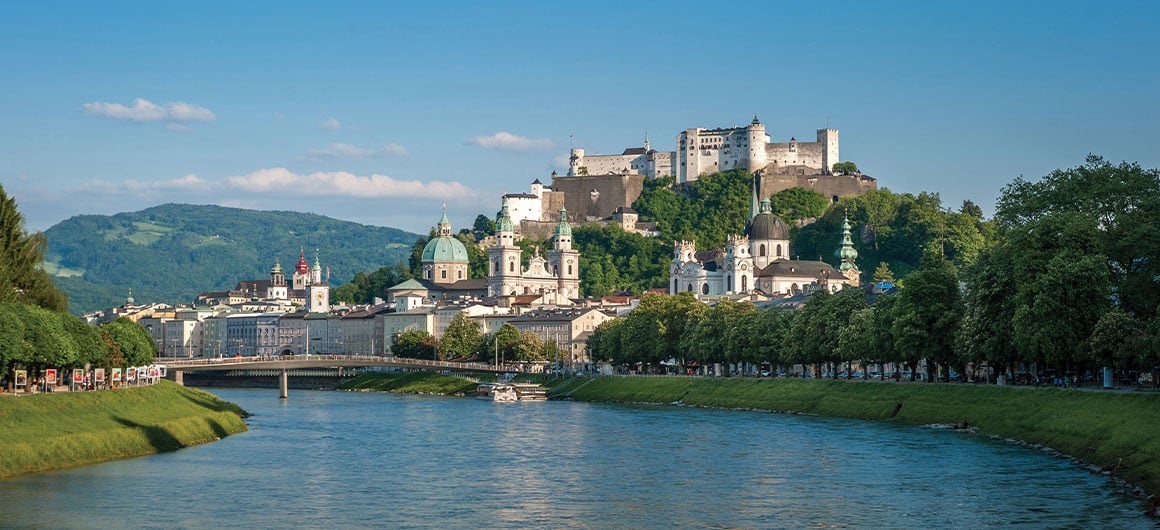
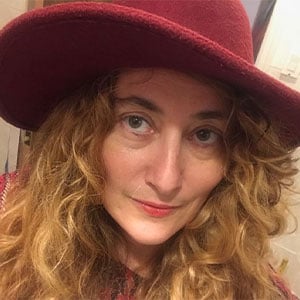
“Do-Re-Mi,” sings my guide Amelia Höring, who’s standing in the middle of Mirabell Gardens in Salzburg, Austria. Most guides don’t sing on city tours, but here it’s fitting—this year, Salzburg, where The Sound of Music was filmed, celebrates the 60th anniversary of the much-loved movie. Julie Andrews, who played Maria Rainer, the governess of the seven von Trapp children, trills the tune in the Mirabell Gardens while teaching them how to sing. “We can all try singing together,” Höring suggests humorously—and we chime in as best we can. Another group nearby joins our impromptu chorus. As if on cue, in the distance, cathedral bells ring melodiously.
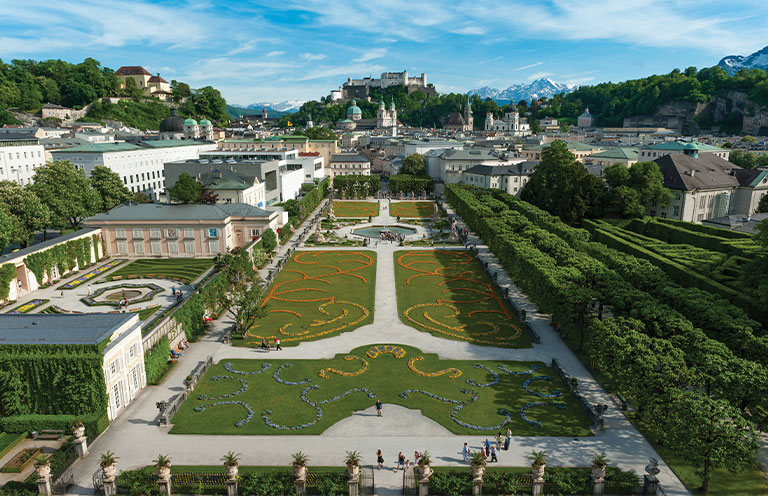
Salzburg is synonymous with music, and not only because of the famous film. The city has rich musical traditions dating back centuries. Legendary composer Wolfgang Amadeus Mozart was born and grew up here. Today, the city hosts numerous concerts and festivals, and even some of its cafés and restaurants add live performances to their dinner menus.
There’s more than music, of course. Salzburg’s history dates back to the Stone Age when it was a Celtic settlement, and later a Roman one. Officially, it became a city around the year 696, when bishop St. Rupert built a Benedictine monastery here. Thanks to the salt mines nearby, Salzburg developed as a wealthy independent city-state that was once described as the Northern Rome, where arts, trades and architecture prospered. That imperial beauty is perfectly preserved in the part of Salzburg called Altstadt—in the Baroque architecture, winding cobblestone streets that open up to majestic squares, centuries-old wrought iron signs that have become a signature of the city, and restaurants that serve family recipes perfected over generations. Whether you’re a music fan, history lover or foodie, you’ll find something memorable to do in this gem of a city.
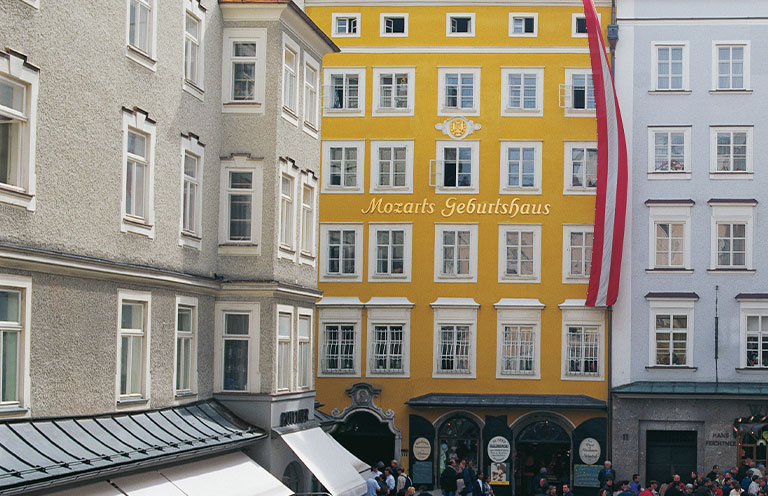
For music lovers
“Let’s start at the very beginning, a very good place to start,” Maria sings in the movie—and Salzburg’s rise to musical stardom began with Mozart. The brilliant musician was born here in 1756 in the third-floor apartment of a building on Getreidegasse. The golden-yellow building now houses a popular museum. Left as original as possible, down to the cracked floor tiles, rough stone walls and exposed wooden ceiling beams, the museum takes you through the life of the iconic genius.
A child prodigy, Mozart already played a harpsichord at age 4, was composing music at 5, and just before he turned 6, his father took him and his sister, also musically gifted, on their first tour. During his short life of only 35 years, Mozart created more than 800 works of music, including 22 operas. Today, Salzburg runs an annual Mozart Week festival at the end of January, drawing lovers of classical music from around the globe.
More than 100 years after Mozart’s death, Austrian impresario Max Reinhardt and his colleagues built upon his fame, creating the Salzburg Festival. Attracting hundreds of thousands of people from all over the world, it includes music of various genres, transforming the region into one giant stage for several weeks during the summer.
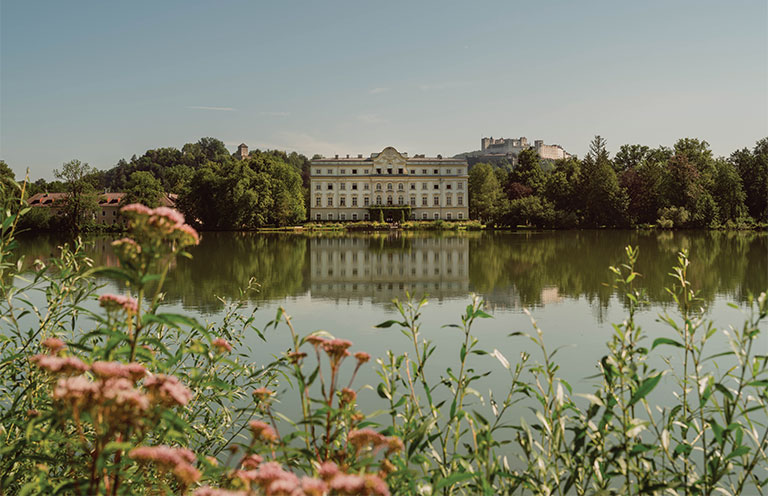
And, in 1964, American director Robert Wise filmed The Sound of Music here, which was based on a true story written by the real Maria von Trapp, whose singing family fled Salzburg in 1938, right after Nazi Germany annexed Austria, and emigrated to the United States. Released in March 1965, the movie won five Oscars and became a worldwide sensation. The movie’s fans have been flocking to Salzburg ever since, enjoying tours that immerse them into the lives of the beloved characters.
To celebrate the film’s 60th anniversary, Salzburg State Theater is staging an open-air musical amid the alpine scenery from June 8 to July 9, 2025; meanwhile, Salzburg Marionette Theater will perform a production of the famous story from May to August 2025. There are ongoing bus, van and bike tours of The Sound of Music movie set locations where fans can “peek behind the camera” into the filming process.
That’s how I learned that in order to construct the luxurious von Trapp residence we see in the movie, the crew filmed at two palaces: Frohnburg and Leopoldskron.
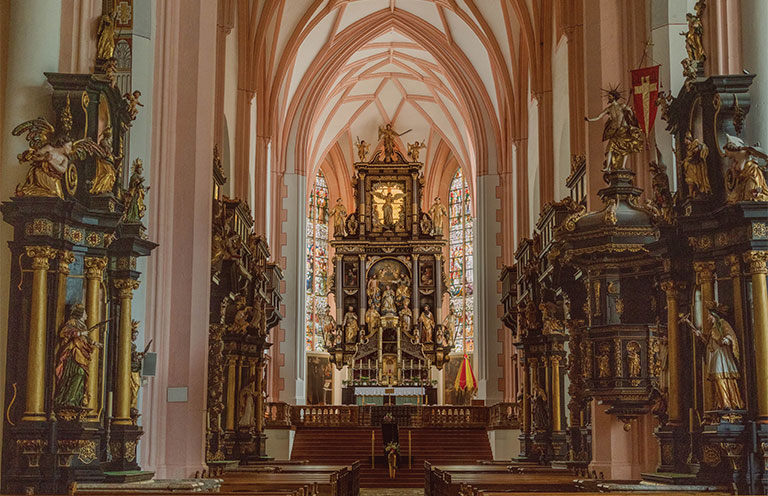
We also visited the Basilica of St. Michael, where Maria wed Georg von Trapp, as well as the very stage from which the family fled to Switzerland after their festival performance at the end of the movie. (Spoiler alert: The guides will tell you that it’s impossible to cross the Alps from Salzburg to Switzerland on foot!) Our last stop was at the glass gazebo where the tune “Sixteen Going on Seventeen” was staged. One of my tour mates, undoubtedly a fan, sang the entire song like a professional, instantly drawing a crowd that erupted into applause at the end. In Salzburg, it seems, the show always goes on.
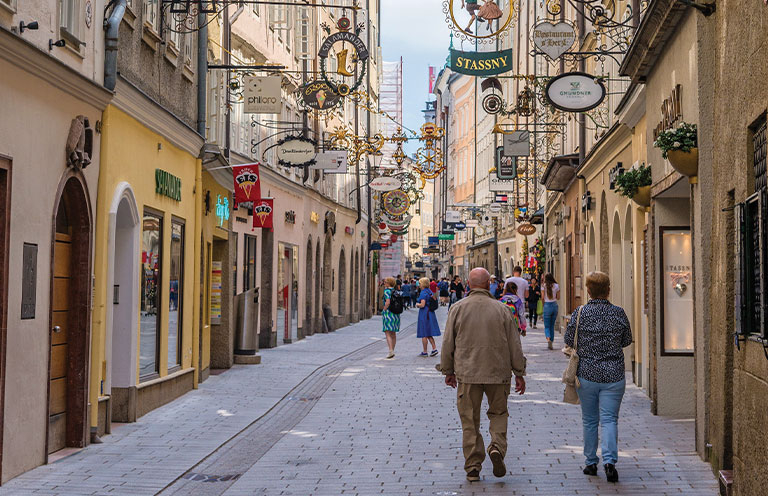
For explorers
When my Sound of Music tour ended, I wandered to Altstadt, which is best explored slowly, because time seems to stand still. That’s particularly true about Getreidegasse, known as one of Altstadt’s most beautiful streets, where stores still display traditional gilded ironworks signs. First mentioned in the city records in 1150, albeit under a different name, Getreidegasse was always a place of trade. Farmers and merchants bought and sold goods here, which inevitably generated waste. So, every Saturday evening, the street was purposefully flooded with water from the Alm canal, a Salzach River tributary, which flushed everything away.
Today’s Getreidegasse is dotted with souvenir shops and high-end boutiques, requiring tough decision-making. Which one of the thousand ultra-cute handmade cuckoo clocks do I want to take home from Heimatkunst Lackner souvenir shop? Perhaps a beer mug from the Heart of Mozart store would be more practical.
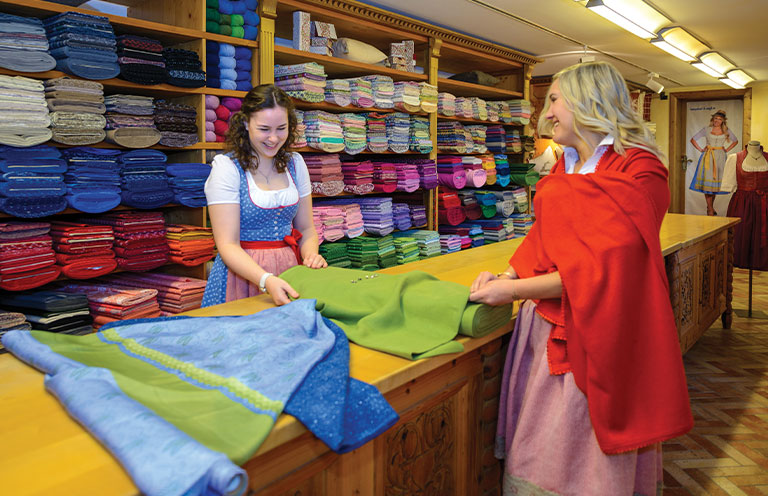
After stocking up on souvenirs, I headed out of the Old Town to explore further. As I crossed Residenzplatz—a stately square with a Baroque fountain where Maria begins to sing “I Have Confidence in Me”—a shop caught my attention. Salzburger Heimatwerk, which translates as a place that sells traditional crafts, turned out to be a high-end boutique. I learned all about the dirndl—the folk dress composed of a tight-fitting bodice worn with a blouse underneath, along with a flowy skirt and an apron. The shop makes traditional lederhosen for men, too.
A short uphill walk from Heimatwerk brought me to the medieval Hohensalzburg Fortress, built atop a mountain called Festungsberg. Another option is to take the FestungsBahn—Austria’s oldest operating funicular railway, which has been bringing visitors to Festungsberg since 1892. Said to be the largest fully preserved castle in Central Europe, the fortress offers 360-degree city views overlooking Baroque towers, lush gardens and the Salzach River that flows through town.
Its duties as a stronghold behind it, today the fort houses numerous attractions, including the Fortress Museum, which reveals what life was like for a medieval Salzburg resident; the Marionette Museum; the Armory, with its collection of medieval weapons; and the dazzling Prince’s Chambers, once the residence of the prince archbishops.
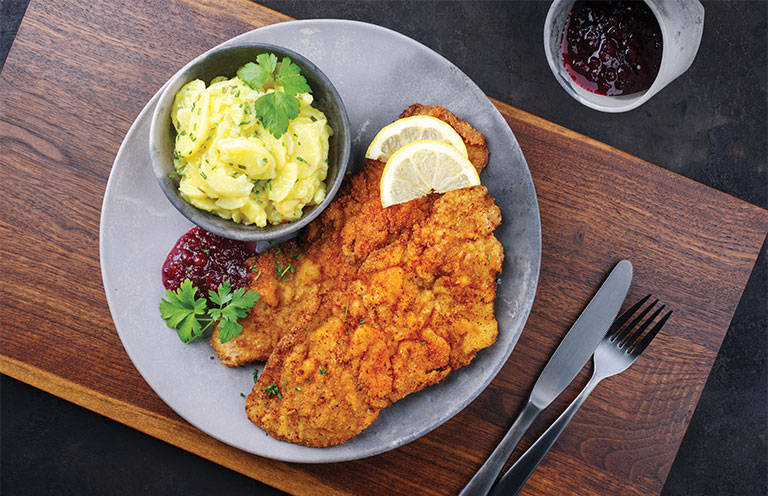
For foodies
For lunch one day, I headed to the 500-year-old Stiegl Brewery, where I ordered the Stiegl Goldbräu and a schnitzel with potato salad. (Julie Andrews may have sung about “schnitzel with noodles” as one of her favorite things, but the dish is actually served with a potato side.)
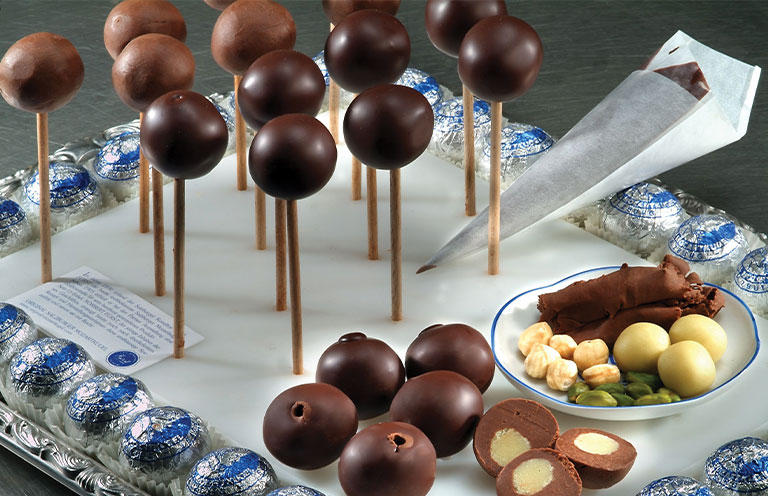
I saved room for apple strudel at Café Konditorei Fürst, where I also learned the story of Mozartkugel, decadent chocolate orbs made with marzipan and pistachios that feature the famous composer on their wrappings. In 1890, confectioner Paul Fürst created the delicacy, later winning a gold medal at a 1905 trade exhibition in Paris. Although variations of the treat are available in every Austrian supermarket nowadays, Fürst’s great-great-grandson Martin still uses the original recipe, found only in Salzburg. I diligently stocked up on the silver-wrapped spheres, making sure I had enough to bring home for everyone.
It’s only fitting that a city as old as Salzburg would have a restaurant reputed to be the oldest in Europe—and that’s where I chose to have dinner one night. Serving customers for more than 1,200 years, today St. Peter Stiftskulinarium is known for timeless classics with modern twists.
I opted for a classical dinner and a show in a separate part of the restaurant with other music-loving diners. Just as I dug into my orecchiette, in walked two characters from Mozart’s opera The Magic Flute—Papageno and his female counterpart Papagena—in their full stage costumes. As they sang their duet, gracefully moving through the room and engaging with patrons, the entire dining space became a stage. The performance exceeded my greatest expectations.
When I walked back to my hotel through the darkened city, my ears picked up some distant melody. The hotel lobby greeted me with the strains of “The Marriage of Figaro,” another Mozart masterpiece. Even the TV screen in my room played some wonderfully soothing classical tunes. When my head hit the pillow that night, I fell asleep to the sound of music—the sounds of Salzburg.
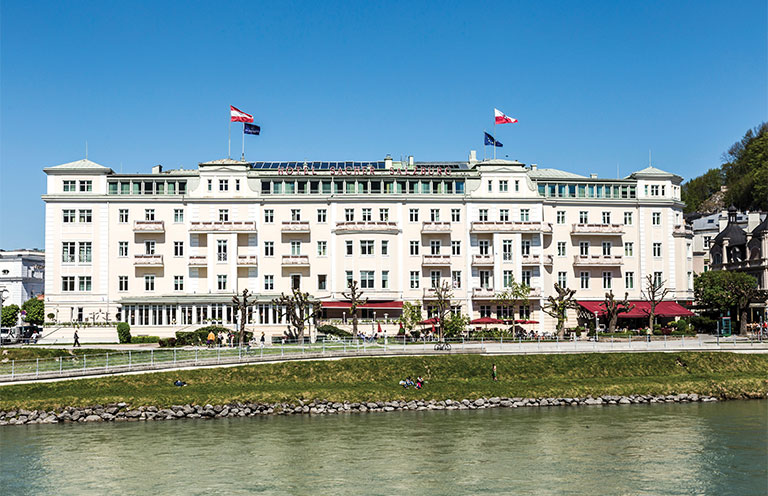
Where to stay
Hotel Goldener Hirsch
Dating back to 1407, this luxury hotel in the Old Town combines modern amenities with antiques, handmade furniture and romantic charm. And it offers a AAA discount.
Hotel Sacher Salzburg
This family-run 110-guestroom hotel is known as the epitome of luxury. Located in the Old Town, it features two elegant restaurants and a spa.
